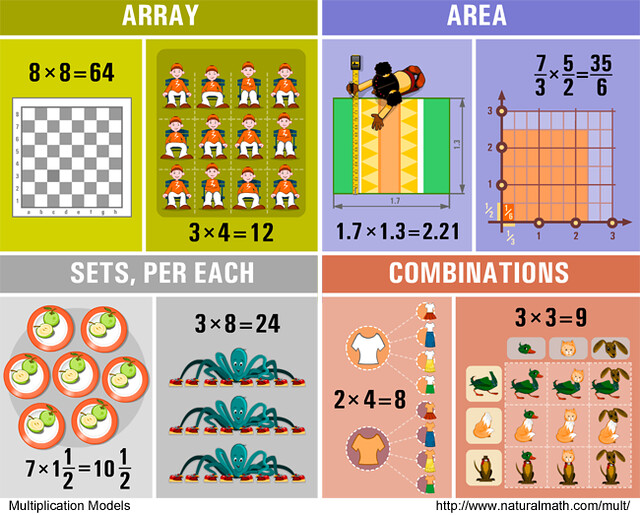Read Jo Boaler's Math-ish and thought it would be useful to pull out the valuable points and provide an overview of the rest.
Encourage Metacognition Through Eight Mathematical Strategies
This is from page 39-45. I'd note that this set of ideas is somewhat typical for the book: though described as methods to encourage "metacognition," these are closer to problem solving strategies.
This list is populated with ideas that will be familiar from other standard sources, like Polya's How to Solve It or Cuoco's Mathematical Habits of Mind. Nonetheless, these are still solid cues for a teacher/tutor to either help with the problem solving process (1, 2, 3, 5, 8) or to move beyond simply finding a right answer (3, 4, 6, 7.)
- Take a step back
- Draw the problem
- Find a new approach
- Reflect on "why?"
- Simplify
- Conjecture
- Become a skeptic
- Try a smaller case
Reflection cues
From page 48, a quasi-infographic with seven cues that are actually directed toward metacognition.
- What mathematical concepts did you learn today?
- How is the idea you learned today related to others you have learned?
- What opportunities did you get to struggle? How did that feel?
- How could you use the mathematical concept in your life?
- What different strategies or approaches to the problem were helpful to you?
- Are there areas that you do not understand and would like more opportunities to learn?
- Can you write your own problem for someone else to try to solve?
Boaler suggests asking students to answer one of these questions, of their choice, in place of standard homework problems. From my personal experience, it takes consistent effort to get students to take these reflection questions seriously.
Group work
Initially, I noted two blocks in this section (pages 52 and 53): a set of 5 roles during group work and 8 "mathematical ways of working." On returning to this discussion, I was more struck by the things that Boaler does not cover related to group work. In particular:
- The critical importance of finding activities that truly require group engagement and cooperation.
- The typical level of frustration that most students associate with their prior group work experiences.
For example, of the 8 "participation quiz" behaviors, only two of them somewhat depend on the group (underlined and bold):
- Recognizing and describing patterns
- Justifying thinking using multiple representations
- Making connections between different approaches and representations
- Using words, arrows, numbers, and color coding to communicate ideas clearly
- Explaining ideas clearly to team members and the teacher
- Asking questions to understand the thinking of other team members
- Asking questions that push the group to go deeper
- Organizing a presentation so that people outside [the group] can understand your [group's] thinking
Struggly
Boaler advertises a website, Struggly, that seemed worth investigating. It maybe hard to get a full sense from the demo activities, but I didn't see anything either bad or special here. If other people have used it, please let me know what is unique about Struggly (in comparison with ST Math, for example.)
Integrating math history
Boaler cites (page 86) several aspects in the history of Fermat's Last Theorem and Andrew Wiles' proof:
- The vast amount of valuable ideas that emerged in the course of attempts to prove FLT
- The fact that Wiles' initially announced proof had a gap
- The way that professional mathematicians persistent through their work over extended periods of time
Personally, I do find it tempting to incorporate biographical and historical information in math classes, but I don't think I have found a way to do this that fully resonates with students or has the effect that I want.
What matters in pre-college mathematics
I'm on board with the idea that only a small number of key concepts from pre-college mathematics are really critical for students and a sharp distillation is helpful. Starting on page 95, Boaler identifies three candidates. For what it is worth, the source is David Coleman, the CEO of the College Board. In general, the College Board doesn't seem a force for good in education, but these three candidates seem plausible.
Number sense/arithmetic
An ability to calculate with basic arithmetic operations, an understanding of fractions, and a sense of estimation. Here is where Boaler really hits her "ish" concept, an acknowledgement that almost all real-world incarnations of mathematical concepts are approximate, rather than exact. I would prefer to broaden this a bit and say that strong number sense should include an ability to switch between the approximate and precise and a recognition of the differences between them.
Data literacy/Data analysis and problem-solving
In this section, Boaler rehashes the (now) obvious point that data is abundant and students/citizens should have some facility to interpret and analyze data. Some nice visualizations are included:
- Stephen Curry's 2015-2016 shot performance (page 124)
- NCAA Women's Soccer PSxG for penalty shots (page 125
- Examples from dear-data.com
- Student data representation from the student's life (page 127)
The youcubed data science course: https://hsdatascience.youcubed.org/curriculum/
I will try to find time to review that specifically.
Linear Equations
This section does not really justify why linear equations have a distinguished place in the top 3 concepts. I may return to this to back-fill potential reasons, but most of what is cited (pages 129-131) is spurious, rather than real linear relationships.
Fractions
Visual representations of 1 ÷ (2/3):














